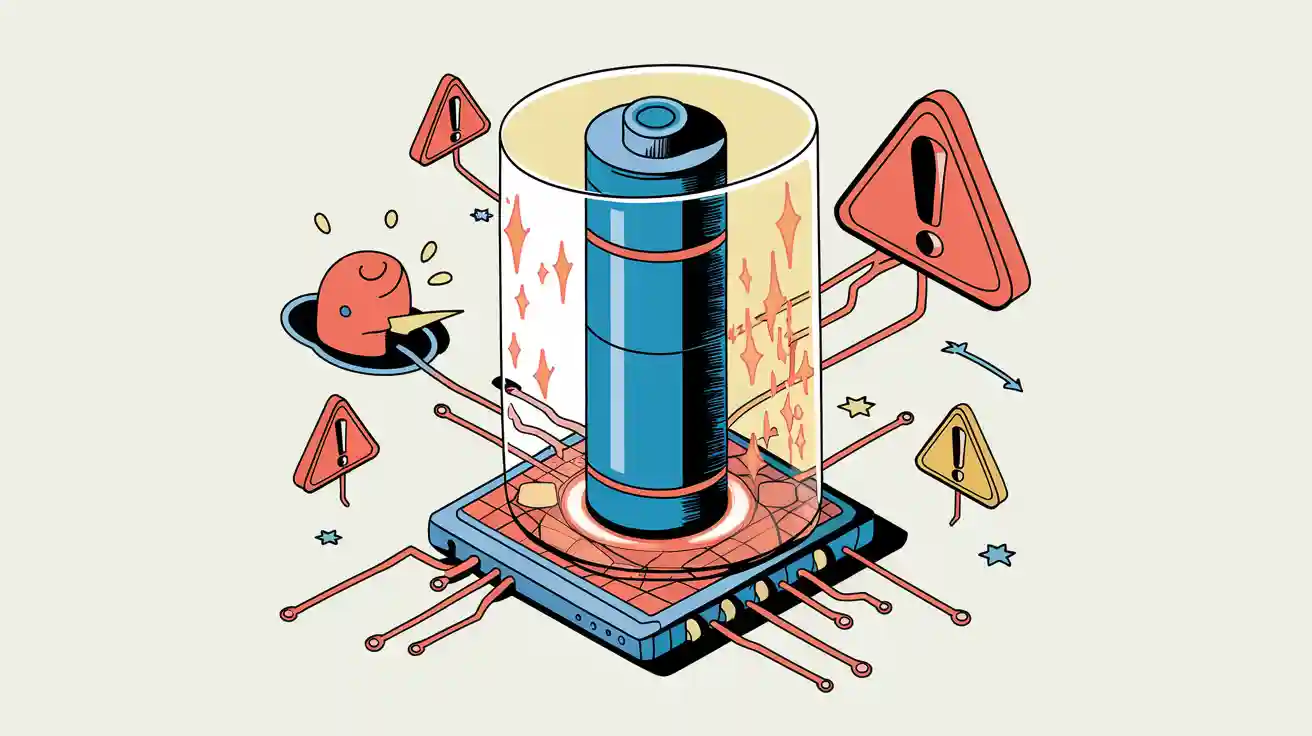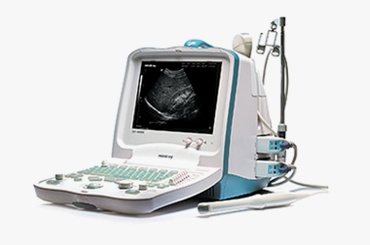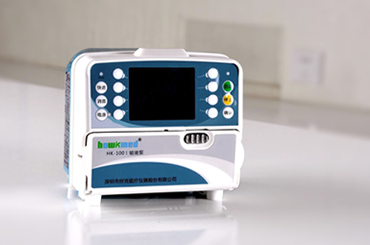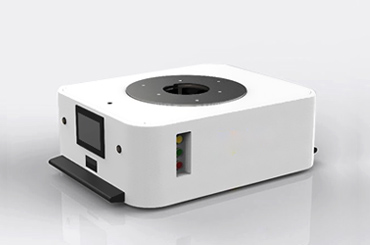-
Key Takeaways
-
Part 1: Understanding Risks in Lithium-Ion Batteries+
- 1.1 Common Risks in Lithium-Ion Battery Systems
- 1.2 Key Factors Leading to Battery Failures
- 1.3 Consequences of Neglecting Risk Management of Lithium Battery Systems
-
Part 2: Strategies for Lithium-Ion Battery Risk Management+
- 2.1 Enhancing Lithium-Ion Battery Safety Through Cell Chemistry
- 2.2 Role of Battery Management Systems (BMS) in Risk Mitigation
- 2.3 Implementing Cooling Systems and Thermal Management Solutions
- 2.4 Establishing Maintenance and Monitoring Protocols
-
Part 3: Lithium-Ion Battery Safety Standards and Testing Protocols+
- 3.1 Overview of Key Safety Standards (UL, IEC, UN Regulations)
- 3.2 Testing Protocols for Lithium-Ion Battery Packs
- 3.3 Certification Processes for Lithium-Ion Battery Manufacturers
- 3.4 Importance of Compliance for Industrial Applications
-
Part 4: Future Trends in Lithium-Ion Battery Safety+
- 4.1 Emerging Technologies for Risk Management of Lithium Battery Systems
- 4.2 Advancements in Solid-State Battery Technology
- 4.3 Recommendations for Businesses to Enhance Lithium-Ion Battery Safety
-
FAQ+
- 1. What is thermal runaway, and why is it dangerous?
- 2. How can you reduce the risk of lithium battery failures?
- 3. Are lithium batteries safe for industrial applications?
A Comprehensive Review of Lithium Battery Risk Management
May 20, 2025 Pageview:2546

The demand for lithium-ion battery systems continues to surge across industrial and commercial sectors, driven by their role in energy storage, robotics, and medical devices. However, without robust risk management of lithium battery systems, businesses face significant threats. Poor lithium-ion battery safety practices can result in thermal runaway incidents, fires, and operational disruptions. The global energy storage market, dominated by lithium-ion batteries, highlights the critical need for safety measures, with over 70% of stationary systems relying on these batteries. Proactively addressing these risks ensures compliance with safety standards and protects your operations from costly failures.
Explore customized solutions for lithium battery systems here.
Key Takeaways
Knowing the dangers of lithium-ion batteries is very important. They can overheat and cause fires or explosions, so safety rules are needed for all who use them.
Using a strong battery management system (BMS) is key. A BMS checks important details to stop overheating and keeps batteries working safely for a longer time.
Regular checks and watching for problems can lower risks a lot. Do regular inspections and use tools to spot issues early before they get worse.
Part 1: Understanding Risks in lithium-ion batteries
1.1 Common Risks in Lithium-Ion Battery Systems
Lithium-ion batteries have become indispensable in industries like medical devices, robotics, and energy storage. However, their widespread use comes with inherent risks. One of the most significant hazards is thermal runaway, a chain reaction triggered by excessive heat. This phenomenon can lead to frequent fires and explosions, posing serious safety concerns.
Manufacturing defects also contribute to risks. For instance, microscopic metal particles inside the battery can cause internal short circuits. These defects, combined with improper handling or charging, increase the likelihood of failures. Historical incidents highlight these dangers. In 1991, a lithium-ion battery in a cellular phone released hot gases, causing burns. Similarly, a one-in-200,000 failure rate led to the recall of nearly six million laptop batteries by Dell and Apple due to overheating.
To mitigate these risks, manufacturers have implemented multiple safety layers. These include limiting active materials, integrating safety mechanisms within cells, and adding electronic protection circuits. Devices like Positive Temperature Coefficient (PTC) components and Current Interrupt Devices (CID) further enhance safety by preventing high current surges and excessive pressure buildup.
1.2 Key Factors Leading to Battery Failures
Several factors contribute to lithium-ion battery failures. One primary cause is improper charging, which can lead to dendrite growth. These needle-like structures form within the battery, causing internal short circuits. Overcharging or charging at high speeds exacerbates this issue, increasing the risk of thermal runaway.
Environmental conditions also play a crucial role. Extreme temperatures, whether too high or too low, can degrade battery performance. Research by Pozzato et al. (2023) revealed that temperature variations significantly impact battery performance indicators. Similarly, Zhang et al. (2023) emphasized the importance of fault detection, analyzing data from 347 electric vehicles (EVs).
Battery aging is another critical factor. Over time, the solid electrolyte interface grows, and active materials are lost, reducing the battery's state of health (SOH). Accurate SOH estimation is vital for advanced battery management systems. Without it, degradation can lead to reduced capacity and operational inefficiencies.
Study | Focus | Dataset Description |
|---|---|---|
Pozzato et al. (2023) | Battery performance indicators related to temperature variations | Dataset from an EV in use for over a year |
Zhang et al. (2023) | Fault detection in lithium-ion batteries | Comprehensive dataset from 347 EVs |
Deng et al. (2023) | Prognostics of battery capacity | Charging records of 20 EVs for over 25 months |
1.3 Consequences of Neglecting Risk Management of Lithium Battery Systems
Neglecting the risk management of lithium battery systems can have devastating consequences. Thermal runaway incidents often result in fires and explosions, endangering lives and property. For example, the Arizona Public Service experienced a 2.16 MWh lithium-ion battery explosion, severely injuring four firefighters. Similarly, KEPCO reported 23 large-scale battery energy storage system (ESS) fires in 2018, causing over $20 million in equipment damage.
Incident Description | Consequences |
|---|---|
Jimei Dahongmen Shopping Centre 25 MWh Lithium Iron Phosphate battery explosion | Loss of 2 firefighters' lives |
Gimhae, SK Battery Energy Storage System fire due to overcharging | Thermal runaway incident |
KEPCO reported 23 large-scale Battery ESS fires in 2018 | Over $20 million in equipment damage |
Arizona Public Service 2.16 MWh Li-ion Battery explosion | Four firefighters severely injured |
Operational disruptions caused by battery failures can cripple businesses. In industries like medical devices and robotics, downtime can lead to significant financial losses and reputational damage. For instance, WHA investigated medical device fires linked to battery failures, where electrolyte leakage caused electrical arcing and thermal runaway. Such incidents underscore the importance of proactive risk prevention strategies.
By prioritizing safety measures and adopting advanced battery management systems, you can minimize these risks. Investing in regular maintenance and monitoring protocols ensures the longevity and reliability of your lithium-ion batteries.
Explore customized solutions for lithium battery systems here.

Part 2: Strategies for Lithium-Ion Battery Risk Management
2.1 Enhancing Lithium-Ion Battery Safety Through Cell Chemistry
Improving cell safety begins with selecting the right chemistry for lithium-ion batteries. Different chemistries offer varying levels of safety, energy density, and cycle life. For instance, LiFePO4 batteries, with a platform voltage of 3.2V and energy density ranging from 100 to 180 Wh/kg, are known for their thermal stability and resistance to thermal runaway. In contrast, NMC batteries provide higher energy density (160–270 Wh/kg) but require stringent safety measures due to their susceptibility to overheating.
To enhance lithium-ion battery safety, manufacturers are exploring advanced materials such as solid electrolytes. These materials replace flammable liquid electrolytes, significantly reducing the risk of fire. Additionally, incorporating additives like flame retardants into the electrolyte can further improve safety. Research into silicon-based anodes also shows promise, as they offer higher capacity while maintaining structural integrity under stress.
Adopting these innovations not only minimizes risks but also aligns with industry trends toward safer and more efficient energy storage solutions. Businesses in sectors like medical devices and robotics can benefit from these advancements by ensuring reliable and safe battery performance.
Explore customized solutions for lithium battery systems here.
2.2 Role of Battery Management Systems (BMS) in Risk Mitigation
A battery management system (BMS) plays a critical role in the risk management of lithium battery systems. It ensures safe operation by monitoring key parameters such as voltage, current, and temperature. By maintaining these parameters within safe limits, a BMS prevents conditions that could lead to thermal runaway or other failures.
For example, limiting charge and discharge rates through a BMS reduces the risk of overheating. High coulomb efficiency allows the system to accurately measure the energy stored in the battery, ensuring optimal performance. Empirical data supports the effectiveness of BMS in reducing risks. Studies show that BMS implementation addresses safety and longevity issues, making it an essential component for industries relying on lithium-ion batteries.
Evidence Description |
|---|
BMS addresses safety and longevity issues by maintaining safe operating conditions. |
Limiting charge and discharge rates prevents overheating and potential failures. |
High coulomb efficiency allows accurate measurement of energy stored in batteries. |
By integrating a robust BMS, businesses can enhance lithium-ion battery safety and extend the lifespan of their systems. This is particularly crucial for applications in infrastructure and industrial environments, where reliability is paramount.
2.3 Implementing Cooling Systems and Thermal Management Solutions
Effective thermal management is vital for maintaining the safety and performance of lithium-ion batteries. Cooling systems prevent excessive heat buildup, which can lead to thermal runaway. Advanced thermal management solutions, such as heat pipe-based systems and phase change materials, have demonstrated their effectiveness in controlling battery temperatures.
A study on heat pipe-based systems for a sixteen-cell battery module showed that maximum cell temperatures remained below 28.5°C and 24.5°C, ensuring stable operation.
Flexible composite materials for thermal management maintained battery module temperatures below 46°C during discharge, highlighting their chemical stability and efficiency.
Passive cooling using phase change materials proved effective in maintaining desired temperature ranges without additional power, making it a cost-effective solution.
These strategies not only enhance safety but also improve the overall efficiency and lifespan of lithium-ion batteries. Industries such as energy storage and robotics can leverage these solutions to ensure consistent performance under varying operational conditions.
2.4 Establishing Maintenance and Monitoring Protocols
Regular maintenance and monitoring are essential for the risk management of lithium battery systems. Proactive measures, such as periodic inspections and real-time monitoring, help identify potential issues before they escalate. Advanced diagnostic tools can detect anomalies in voltage, temperature, and state of charge, enabling timely interventions.
Establishing a comprehensive maintenance protocol involves:
Conducting routine inspections to check for physical damage or signs of wear.
Using predictive analytics to forecast potential failures based on historical data.
Implementing automated monitoring systems to track battery health in real-time.
These practices not only enhance safety but also optimize the performance and longevity of lithium-ion batteries. Businesses in sectors like medical devices, robotics, and infrastructure can significantly reduce downtime and operational disruptions by adopting these strategies.
Explore customized solutions for lithium battery systems here.

Part 3: Lithium-Ion Battery Safety Standards and Testing Protocols
3.1 Overview of Key Safety Standards (UL, IEC, UN Regulations)
Adhering to current safety standards is essential for ensuring the reliability and safety of lithium-ion batteries. These standards, such as UL, IEC, and UN regulations, provide comprehensive guidelines for manufacturing, testing, and transporting batteries. For instance, UN 38.3 focuses on the safe transportation of lithium-ion batteries by addressing risks like leaks, fires, and environmental stressors during transit. Similarly, IEC 62133 emphasizes safety in consumer electronics by preventing hazards like thermal runaway and short circuits. It also mandates proper labeling and documentation for compliance.
Standard | Focus Area | Key Performance Indicators and Compliance Requirements |
|---|---|---|
UN 38.3 | Safe transportation of lithium-ion batteries | - Ensures safe transport without risk of leaks or fire. |
IEC 62133 | Safety in consumer electronic devices | - Prevents hazards like thermal runaway, short circuits, and overcharging. |
By following these standards, you can ensure that your lithium-ion batteries meet global safety benchmarks, reducing risks and enhancing trust in your products.
3.2 Testing Protocols for Lithium-Ion Battery Packs
Robust testing protocols are critical for evaluating the performance and safety of lithium-ion battery packs. These protocols include methods like voltage measurement, ohmic testing, and full cycle testing. Voltage measurement reflects the state-of-charge, while ohmic testing identifies internal resistance and potential defects. Full cycle testing provides accurate capacity readings through charge and discharge cycles.
Testing Method | Purpose |
|---|---|
Thermal Runaway Testing | Assesses the risk of fire or explosion during thermal runaway events. |
Heat Dissipation Testing | Examines heat management during high-load operations. |
Vibration Testing | Simulates transportation impacts to assess structural integrity. |
Shock and Impact Testing | Measures resistance to sudden impacts for safety assurance. |
Crush Testing | Evaluates behavior under extreme compression forces. |
Humidity Testing | Determines effects of high humidity on performance. |
Altitude Testing | Assesses performance in low-pressure environments. |
Salt Fog Testing | Tests resistance to corrosion from saltwater. |
Emerging technologies like AI and machine learning are revolutionizing battery testing. These tools analyze large datasets to predict failure modes and optimize testing protocols. Real-time monitoring systems and advanced imaging techniques, such as X-ray and CT scans, allow for non-invasive inspections of battery structures. By implementing these advanced testing standards, you can ensure the safety and reliability of your lithium-ion battery packs.
Explore customized solutions for lithium battery systems here.
3.3 Certification Processes for Lithium-Ion Battery Manufacturers
Certification processes for lithium-ion battery manufacturers involve rigorous evaluations to ensure compliance with safety and quality standards. These assessments cover areas like quality management, personnel training, and infrastructure. For example, audits often review documentation, inspect facilities, and analyze incident reporting policies. Regular audits have shown significant improvements in quality and safety. One case study revealed a 50% reduction in open-circuit voltage (OCV) failure rates after implementing audit recommendations, with further improvements over subsequent months.
Area Assessed | Description |
|---|---|
Quality and safety management | Evaluation of management systems, performance indicators, and corrective actions. |
Personnel | Assessment of staff roles, training programs, and record management. |
Documentation | Review of processes, procedures, and document control. |
Infrastructure and equipment | Inspection of premises, IT systems, and maintenance practices. |
Complaints and reporting | Analysis of incident reporting and response policies. |
Supplier and customer management | Evaluation of compliance measures for partners. |
Self-inspections and internal audits | Review of ongoing monitoring and auditing practices. |
Cargo operations | Assessment of transportation, storage, and warehousing practices. |
By obtaining certifications, you demonstrate your commitment to safety and quality, which is crucial for gaining trust in industrial and commercial markets.
3.4 Importance of Compliance for Industrial Applications
Compliance with lithium-ion battery safety standards is vital for industrial applications. The global market for lithium-ion batteries is growing by over 30% annually, increasing the need for stringent safety measures. Regulatory bodies like OSHA enforce penalties for safety violations, emphasizing the importance of adhering to these standards. A recent incident involving a lithium battery fire in October 2023 highlighted the consequences of inadequate employee training on safety hazards.
For industries like medical devices, robotics, and energy storage systems, compliance ensures operational reliability and reduces risks. Proper adherence to safety standards also supports safe battery disposal and promotes sustainable battery recycling practices. By prioritizing compliance, you can protect your business from operational disruptions and reputational damage.
Explore customized solutions for lithium battery systems here.

Part 4: Future Trends in Lithium-Ion Battery Safety
4.1 Emerging Technologies for Risk Management of Lithium Battery Systems
Emerging technologies are reshaping how you can manage risks in lithium battery systems. These advancements address critical challenges like high temperatures and flammability, which have historically hindered adoption in sensitive applications.
Battery management systems (BMS) are becoming smarter with AI integration. These systems now monitor battery health in real-time, optimizing performance and preventing failures that could lead to fires.
Flame-retardant electrolytes are gaining traction. They enhance safety by reducing the risk of thermal runaway and can be seamlessly integrated into existing production lines.
Non-flammable ionic liquids and flame-retardant additives are also being developed to further improve flame resistance.
The lithium-ion battery market, projected to reach $349.6 billion by 2034, is driven by these innovations. As demand grows in sectors like electric vehicles and renewable energy, adopting these technologies ensures safer and more reliable battery systems.
4.2 Advancements in Solid-State Battery Technology
Solid-state batteries represent a significant leap forward in battery technology. They replace liquid electrolytes with solid ones, offering several advantages:
Feature | Description |
|---|---|
Energy Density | Higher energy density allows for longer battery life or smaller battery packs. |
Safety | Solid electrolytes reduce fire risks, enhancing overall safety. |
Longevity | Increased charge-discharge cycles extend battery lifespan. |
Companies like Volkswagen and Samsung SDI are leading the charge. Volkswagen's collaboration with QuantumScape has resulted in batteries with quicker charging times and higher energy density. Toyota is targeting a range of 750 miles on a single charge with its solid-state EV batteries, promising a 10-minute charging time. These advancements make solid-state batteries a safer and more efficient alternative for future applications.
4.3 Recommendations for Businesses to Enhance Lithium-Ion Battery Safety
To stay ahead, you should adopt proactive measures to enhance lithium-ion battery safety. Start by integrating advanced BMS into your systems. These tools monitor critical parameters like voltage and temperature, preventing potential failures.
Invest in flame-retardant materials and explore solid-state battery options for applications requiring higher safety standards. Regularly update your maintenance protocols to include real-time monitoring and predictive analytics. These steps not only reduce risks but also improve the lifespan and reliability of your battery systems.
By embracing these strategies, you position your business to meet growing market demands while ensuring operational safety and efficiency.
Adopting best practices for lithium-ion battery safety ensures operational reliability and minimizes risks. Compliance with safety standards and leveraging advanced technologies like solid-state batteries enhance performance and safety. Prioritize research and innovation to meet industry demands in medical, robotics, and infrastructure sectors. Explore customized solutions for lithium-ion batteries from Large Power.
FAQ
1. What is thermal runaway, and why is it dangerous?
Thermal runaway occurs when a lithium battery generates excessive heat, leading to fires or explosions. It poses a significant risk to safety and property.
2. How can you reduce the risk of lithium battery failures?
You can reduce the risk by using advanced battery management systems, implementing cooling solutions, and conducting regular maintenance to prevent thermal runaway incidents.
3. Are lithium batteries safe for industrial applications?
Yes, lithium batteries are safe when you follow safety standards, adopt risk management strategies, and address potential runaway scenarios with proactive measures.
Tip: For professional guidance on safety standards, visit Large Power.
- Prev Article: Revolutionary Advances in Lithium Battery Technology
- Next Article: How lithium batteries perform at high altitudes
Leave Message
Hottest Categories
-
Hottest Industry News
-
Latest Industry News









